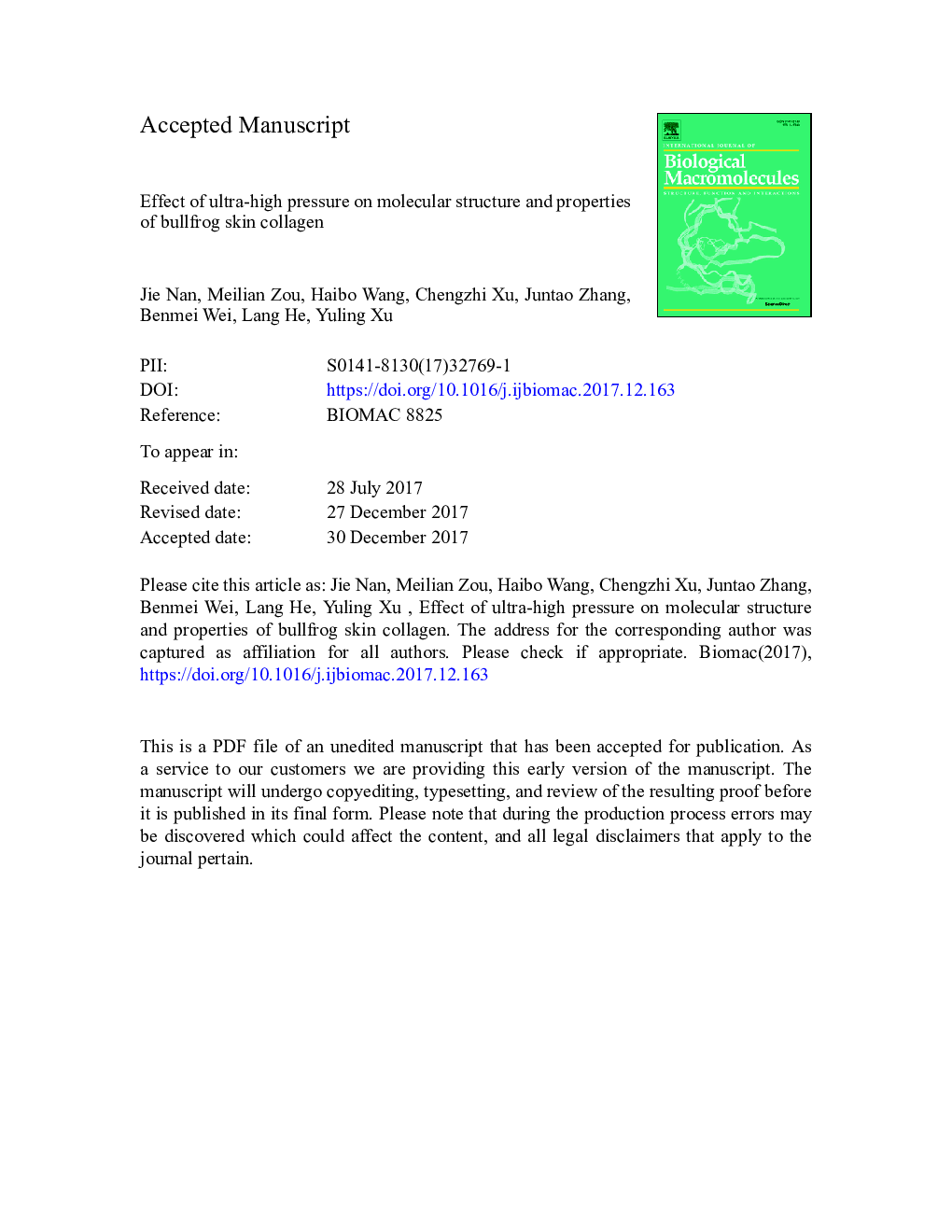| Article ID | Journal | Published Year | Pages | File Type |
|---|---|---|---|---|
| 8327788 | International Journal of Biological Macromolecules | 2018 | 33 Pages |
Abstract
Ultra-high pressure technology has attracted a great deal of attention in recent years, and has been widely used in food science, medicine, and other fields. This study aimed to determine the effect of ultra-high pressure on the structure and properties of collagen. Native collagen extracted from bullfrog skin was processed under different ultra-high pressure treatment conditions (300, 400, and 500Â MPa). Then systematic analysis of the molecular structures and properties of the samples after ultra-high pressure treatment were performed. It was found that the conformation of collagen molecules could be adjusted by ultra-high pressure treatment, and this regulation was closely related to the level of treatment pressure. A possible mechanism of the impact of ultra-high pressure on the collagen molecular structures was speculated according to the experimental results. At low pressure levels (300-400Â MPa), the pressure perpendicular to collagen axis dominates and leads to a tightening of the triple helix structure of collagen, while the pressure parallel to collagen axis is dominant and the triple helix tends to dissociate like a zipper at high pressure levels (>Â 400Â MPa). These structural changes would simultaneously result in various changes to thermal stability, self-assembly properties, and antigenicity of collagen.
Related Topics
Life Sciences
Biochemistry, Genetics and Molecular Biology
Biochemistry
Authors
Jie Nan, Meilian Zou, Haibo Wang, Chengzhi Xu, Juntao Zhang, Benmei Wei, Lang He, Yuling Xu,
